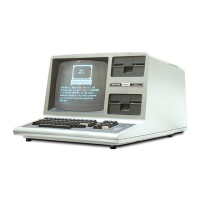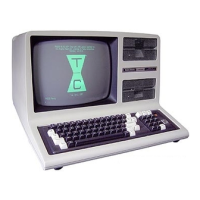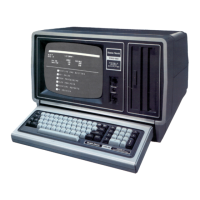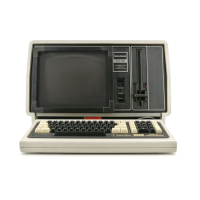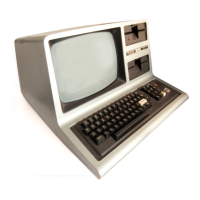HARDGEN
displays
a
range
of numbers,
which varies
accord-
ing |o
the numbers
entered
in response
to
easier prompts.
Enter a
number
in
that
range,
7. Now HARDGEN asks II you wanl to change any of your
answers
(f
you are satisfied
with
the answers, type ri
fENTEHJ
to
indicate
no changes. If you want to change an answer, type
V
GHHEJf'j so
that the
system
returns
to
the logical
drives
prompt.
3. Most likely, at least 1 of
your
hard disk
drives
wfli
be
divided
into
2
or more logical
drives-
HARDGEN
can
divide the space
in t of 4 ways. It lists lhe methods and asks which
you
prefer:
A) Divide
up
the
space
as
e v
e
n L
y
as
poss
i b Le.
Where possible, HARDGEN
tries
to allocate the same
amount
of
space tor each
logical
drive,
If, because of
physical limitations, HARDGEN cannot do
this,
it
in-
forms you
and
asks
you
to
choose
a
different
option,
B)
Give
more space tot he higher-
numbered dri ves
,
You may find this optsOn
useful
for systems with large
data bases, such as payroll and accounting packages.
These systems need mare
space
on
the
data
disk
drives-
This option does
not
appear
if
the number
of
logical
and
physical
hard disk drives
is equal.
C) Give more space to trie Lower-
numbered
dri ves.
you may prefer this option for
some
software develop-
ment systems.
D) ALLows you
to
specify which
read/write
heads
are
to be
assigned to each Logical drive.
This option is
useful
if
TRSDOS
6
and anoiher
operating
system
are
to share Hie
drives, or
if
oilier
Special
circumstances
exist. Do not use
this
option
without
first refer
ring
lo Appendix B,
Which
method
would
you
prefer?
bnter the letter of your selection.
After
you choose A, B,
C,
or
D,
HARDGEN displays
lhe
nor-
mal
steps being taken by the automatic allocation
process
If
certain conditions
are encountered,
the screen
describes
them.
5

